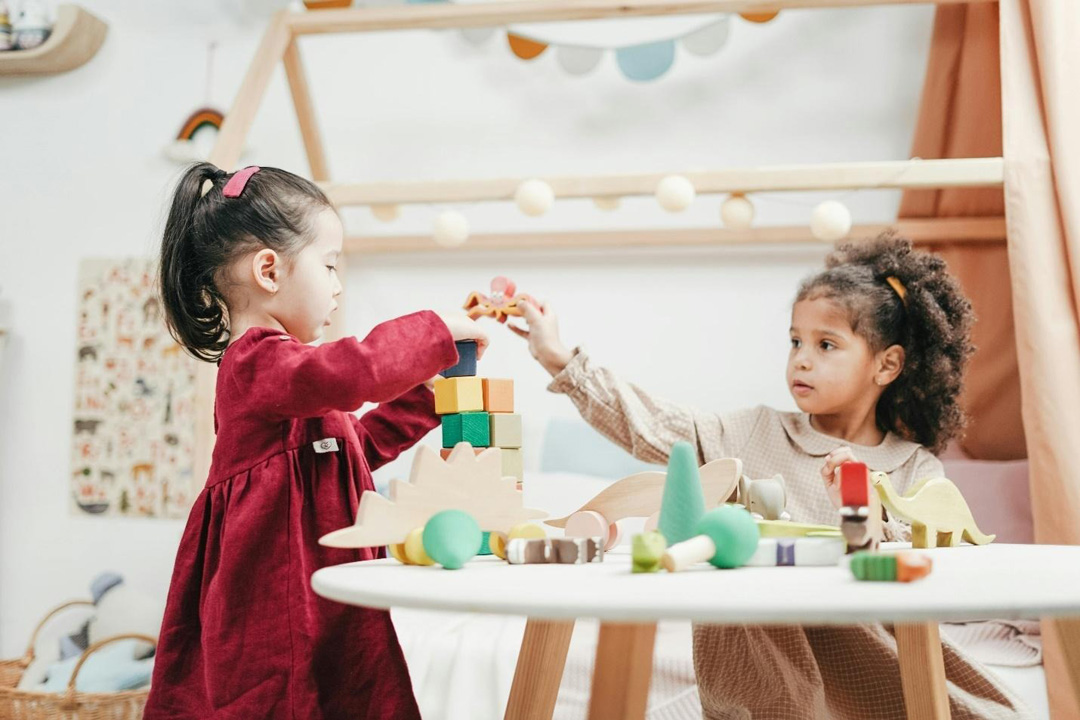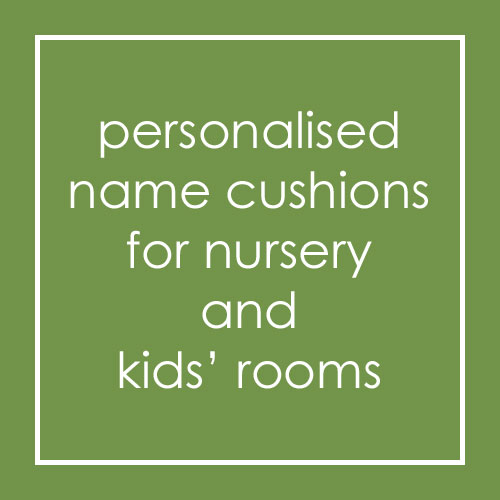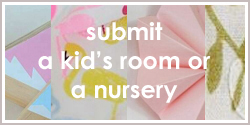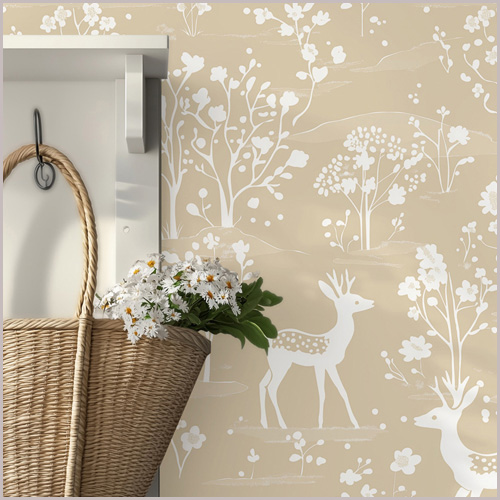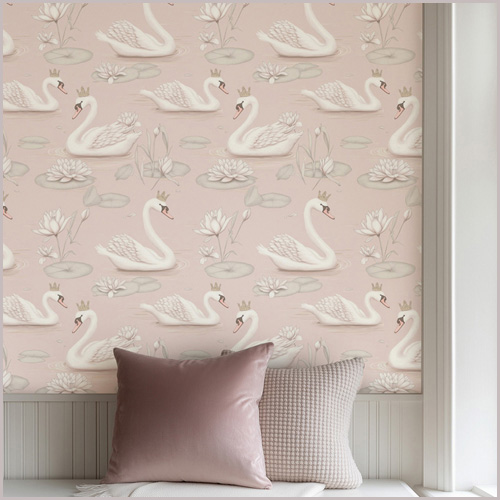Every parent wants to create an environment where their children can thrive, a place that sparks curiosity, encourages independence, and gives them the freedom to explore safely. That’s where Montessori-inspired spaces come in. Based on Maria Montessori’s philosophy, these child-centered environments are designed to meet kids at their developmental level, offering them the tools they need to learn and grow through hands-on experiences.
A Montessori space is more than just a pretty room. It’s a carefully thought-out area where everything is accessible, functional, and arranged to promote order and focus. Creating such a space might feel like a big undertaking, but with the right planning and approach, you can transform any room or even a corner of your home into a nurturing space that inspires creativity and independence.

@atolyeham
Planning Your Montessori Space
The first step to creating a Montessori-inspired environment is to plan with intention. Think about what you want the space to accomplish. Is it meant for play, learning, quiet reading, or a mix of all three? Once you’re clear on the purpose, you can start planning how to make the most of your available space.
If you’re thinking about adding child-sized furniture, shelving, or even making small updates to your flooring or lighting to make the room safer and more inviting, it’s smart to consider your budget. If you’re ready to invest in creating the perfect Montessori space but need some financial flexibility, then visit https://www.sofi.com/personal-loans/home-improvement-loans/ to explore options that can make these home updates more affordable. Having a financial plan in place allows you to focus on designing a functional, long-lasting space without unnecessary stress.
When planning the layout, keep the area open and clutter-free so children can move freely and safely. Think about natural light, as a bright room feels more welcoming and energizing. Safety should be your top priority. Cover outlets, secure heavy furniture to the wall, and make sure there’s nothing sharp or breakable within reach.
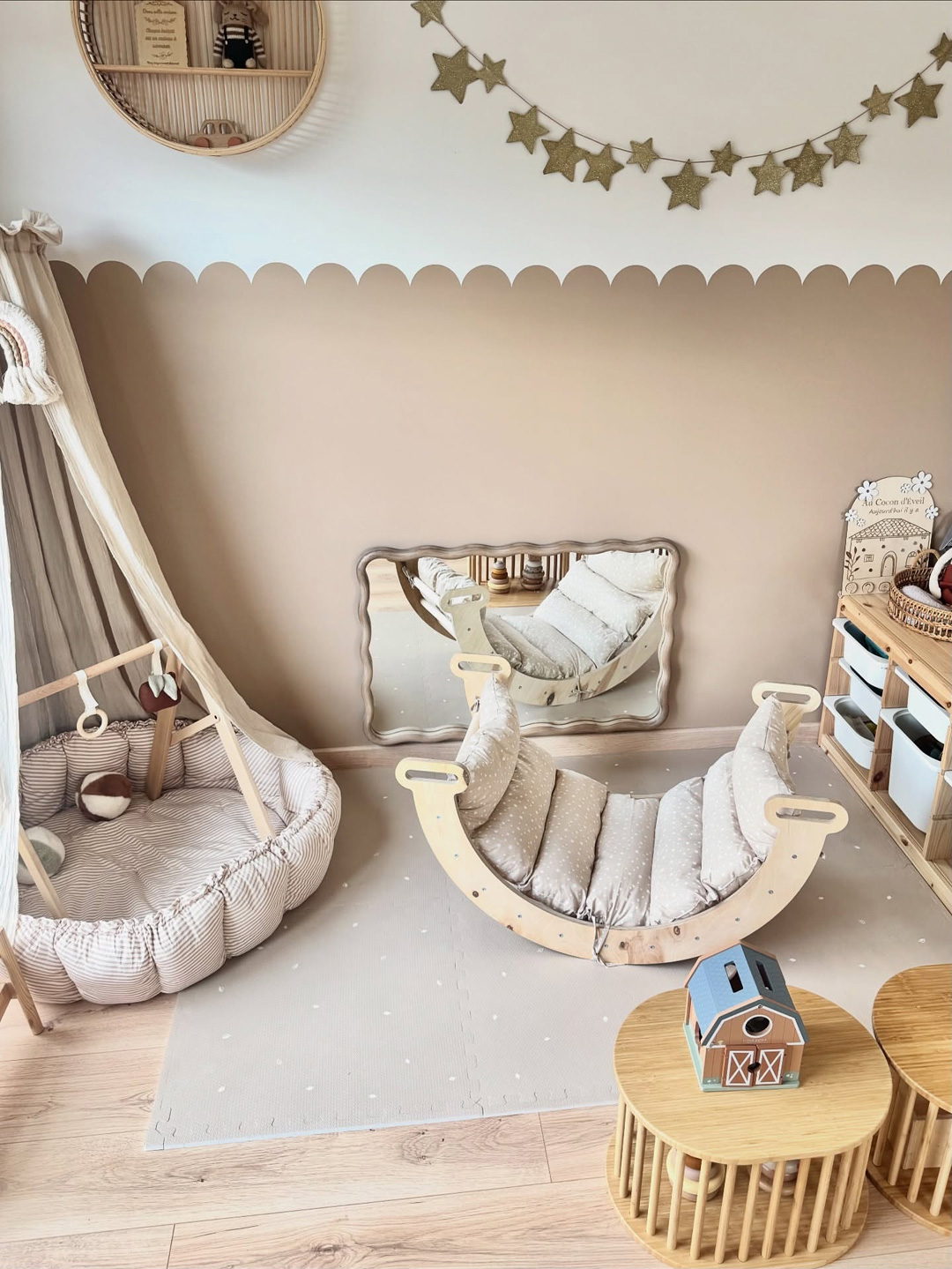
@nounoukat_
Choosing Child-Friendly Furniture
Montessori spaces are all about accessibility. Low shelves, small tables, and chairs that are the right height for your child encourage independence by allowing them to get what they need without adult help. Choose sturdy furniture made from natural materials like wood. It’s durable, safe, and aesthetically calming.
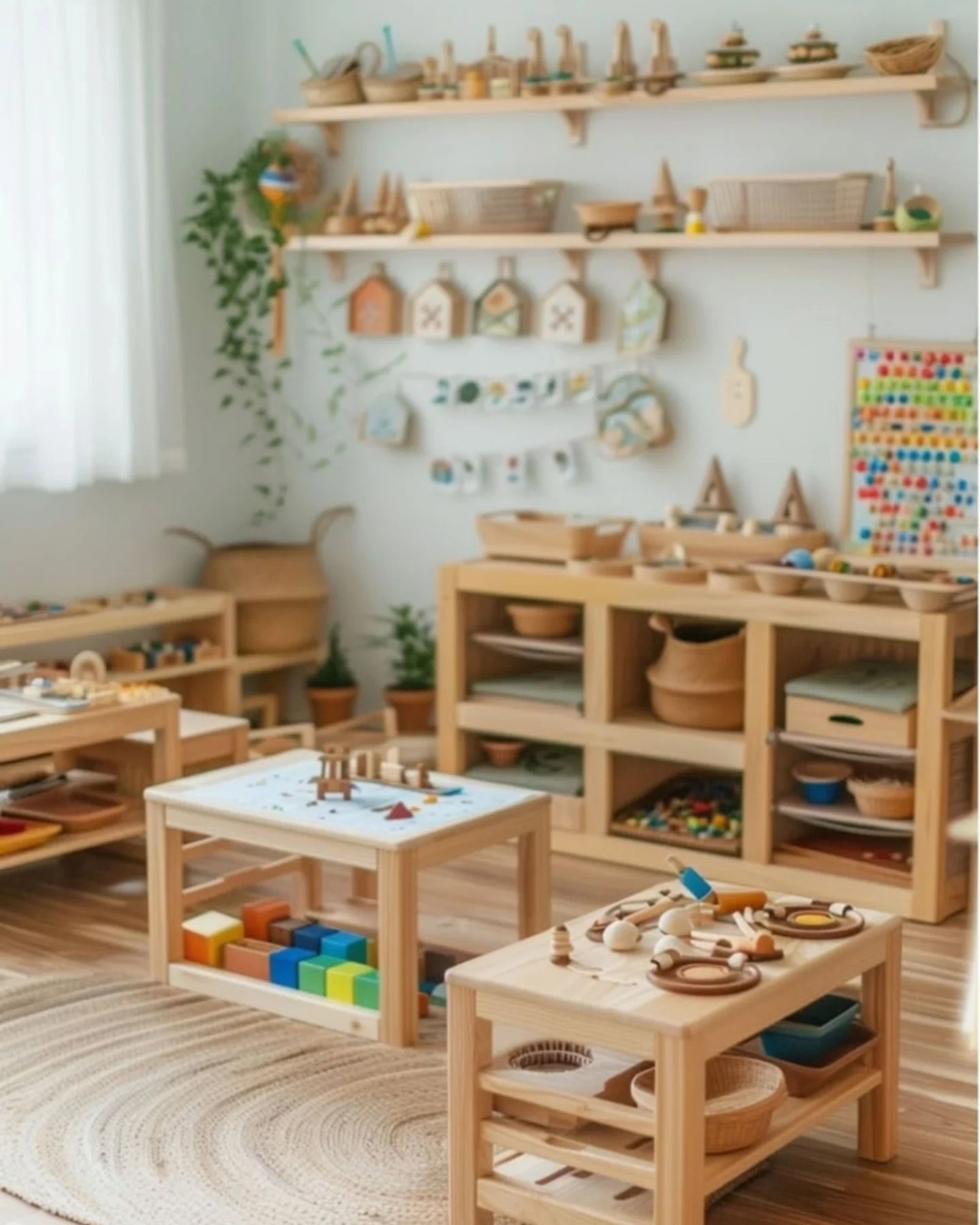
@itszactyron
A small table and chair set can become your child’s favorite spot for drawing, reading, or doing hands-on activities. Floor mats or rugs can define play areas and add a soft surface for younger children. Always check that furniture is stable and won’t tip over easily. Safety is key in a space designed for independent exploration.
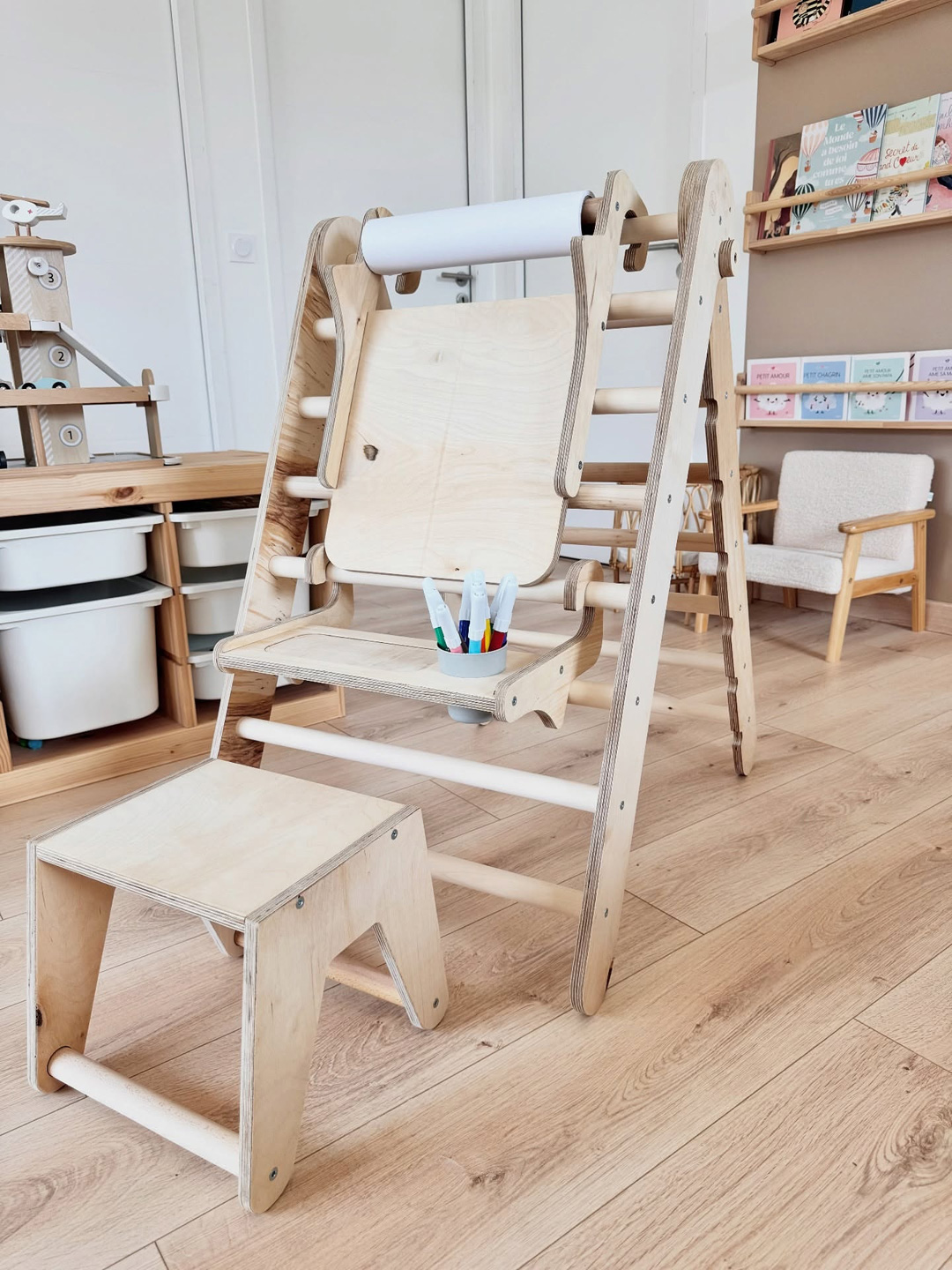
@nounoukat_
Organising Toys and Learning Materials
One of the hallmarks of a Montessori-inspired space is order. Everything should have a designated place. Open shelves and baskets work well for this because they display toys and materials clearly, making it easier for kids to choose what they want to play with.
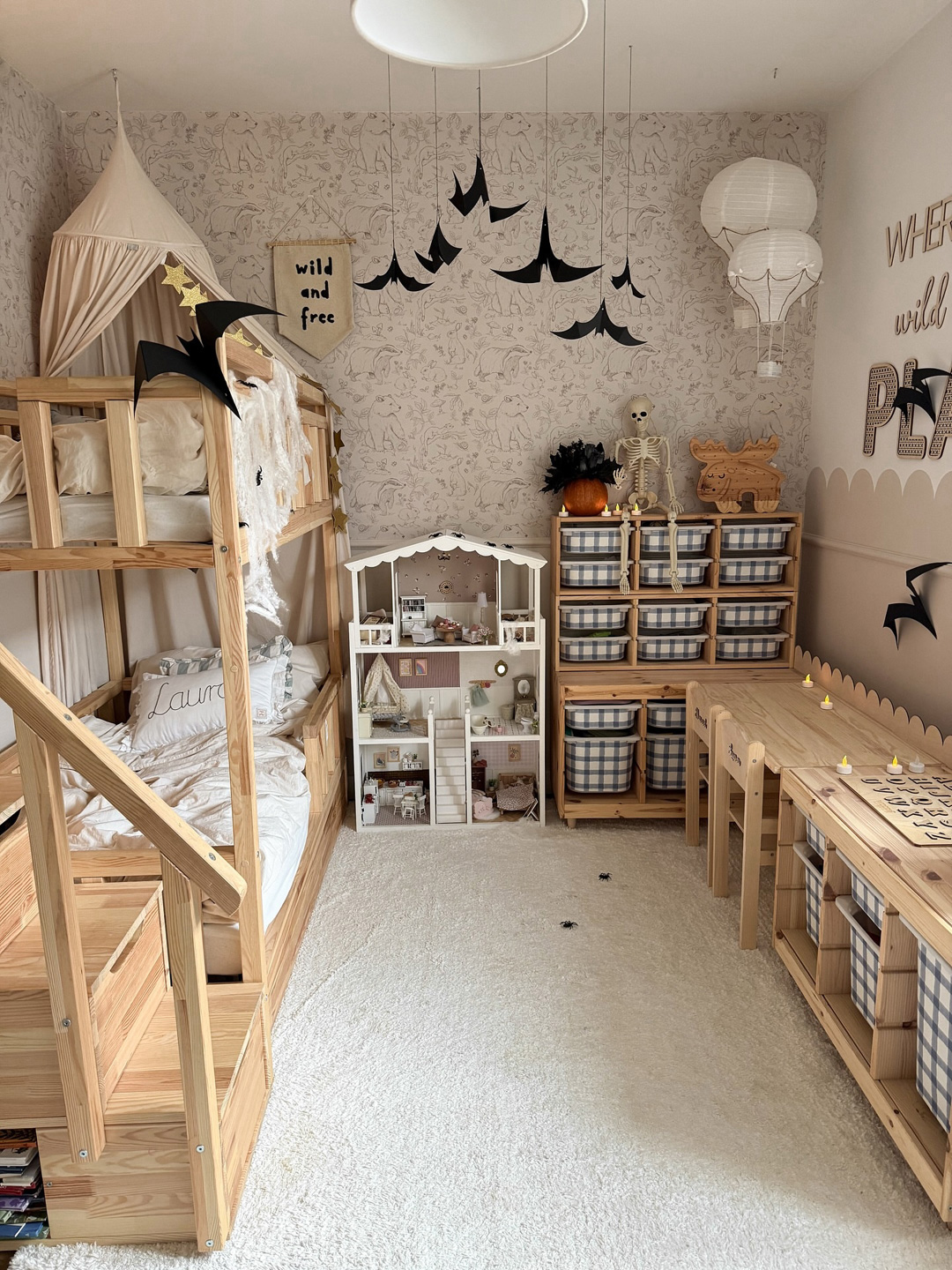
@nat_kowa
Rotating toys is a great way to keep your child engaged without overwhelming them. Too many options can create chaos, while a curated selection encourages focus and creativity. Group toys and activities by theme, puzzles in one basket, building blocks in another, and art supplies neatly arranged in jars or trays. This setup not only keeps things tidy but also teaches children how to clean up after themselves.

@classicworldtoys
Creating a Calm and Inviting Atmosphere
The look and feel of the room should be calm, cozy, and inviting. Soft colors like beige, light blue, or pastel green create a soothing environment that helps children focus. Natural light is ideal, so keep windows clear and use sheer curtains when possible.
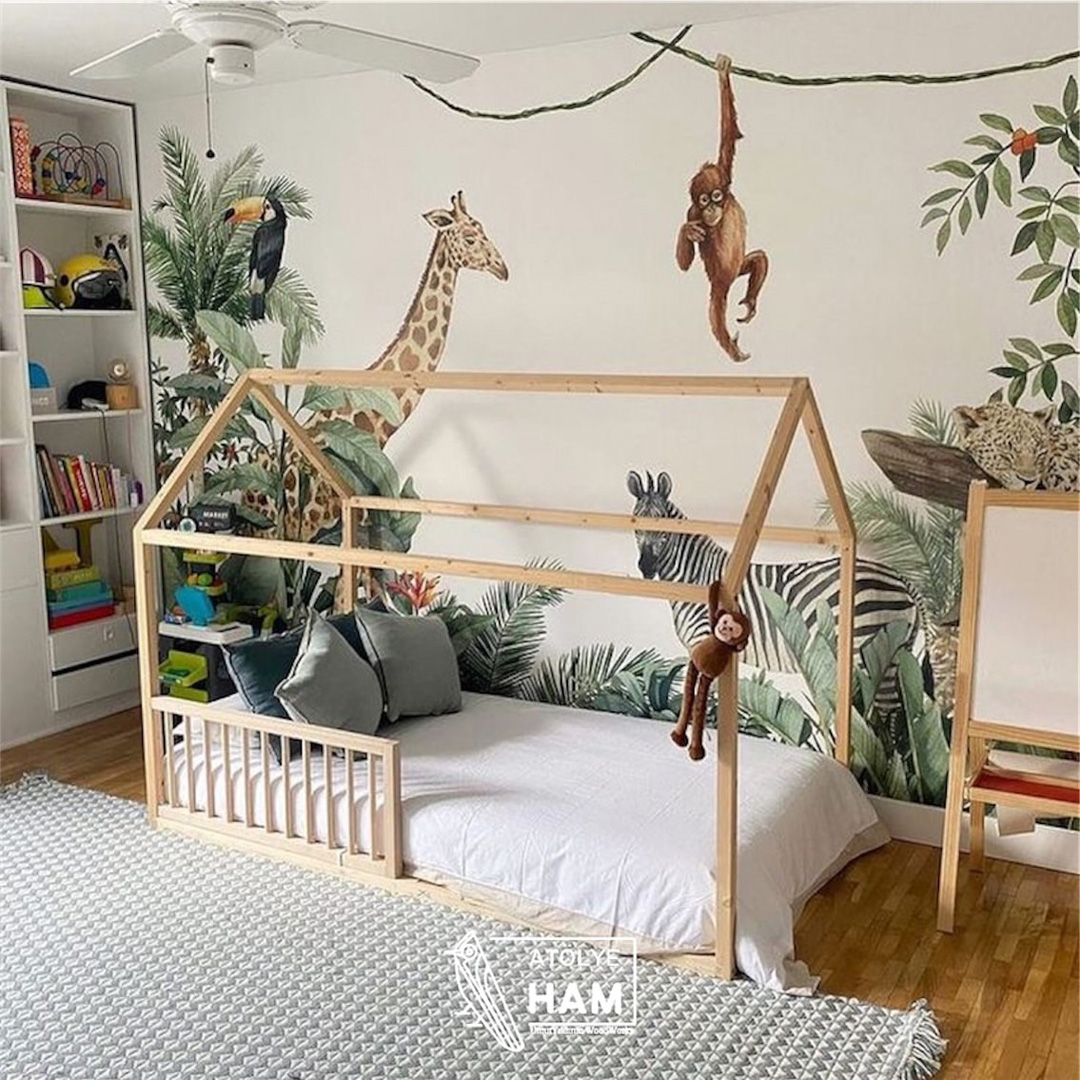
@atolyeham
Add a few simple decorations, such as framed artwork at your child’s eye level, so they can enjoy and connect with their space. Including natural elements like potted plants, seashells, or smooth stones can introduce sensory experiences and teach children to appreciate nature. You might also include a small rug or floor cushion to create a cozy reading corner. Keep the décor minimal; too much visual clutter can distract from learning and play, so aim for a clean and balanced look that feels welcoming yet peaceful.
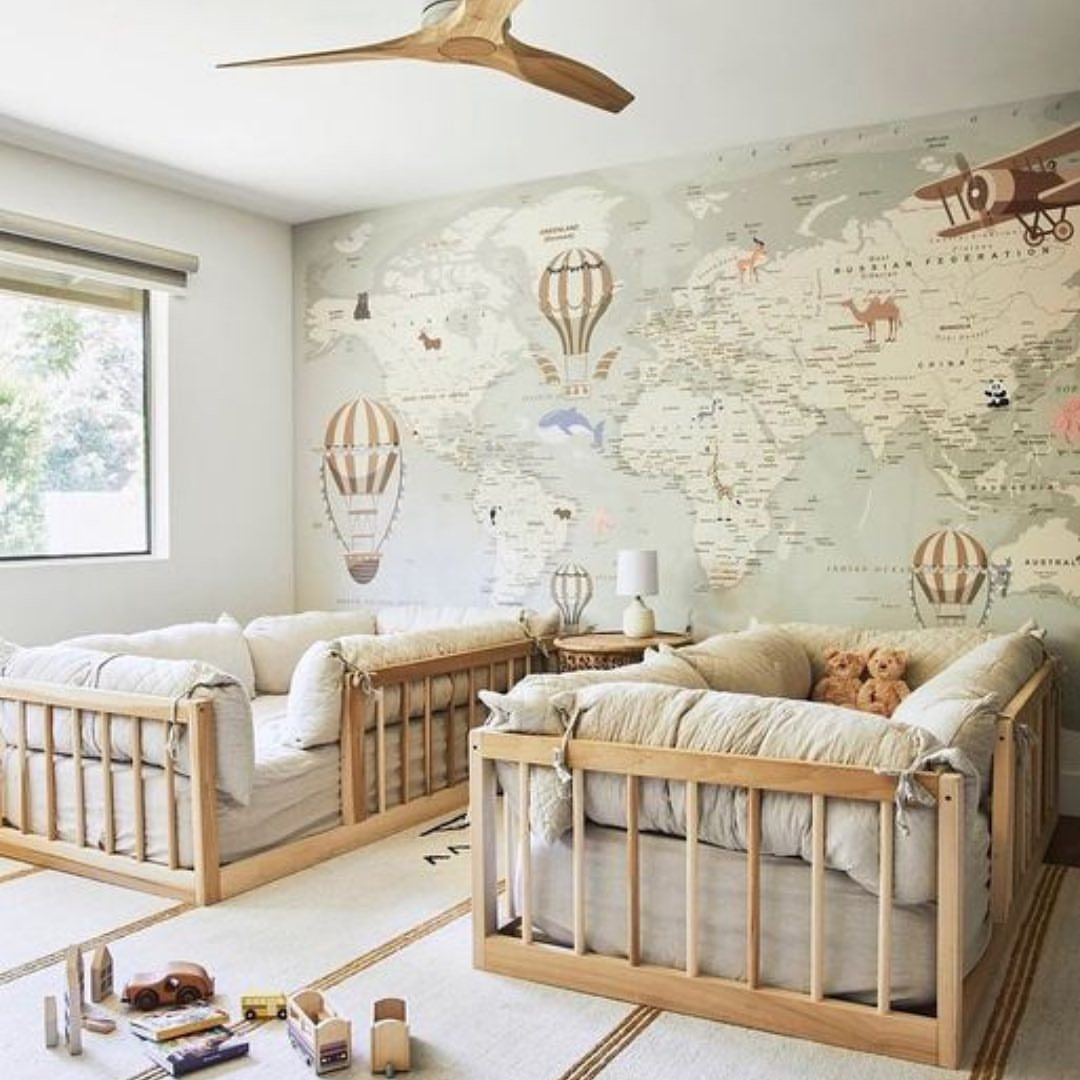
@montoddler
Encouraging Independence and Practical Life Skills
Montessori spaces are designed to help children practice real-life skills. Include hooks at their height so they can hang their coats, step stools so they can reach the sink, and labeled storage bins to help them learn organization.

@little.outback.learners
Practical life activities, like pouring water from one cup to another, sweeping with a small broom, or folding napkins, are great ways for kids to build coordination and confidence. Creating space for these activities at home helps children feel capable and encourages them to take responsibility for their environment.
Adapting The Space As Your Child Grows
Children’s needs change quickly, so flexibility is important when designing their space. Choose furniture and materials that can grow with them. Adjustable shelves, for example, allow you to change the height as your child gets taller.
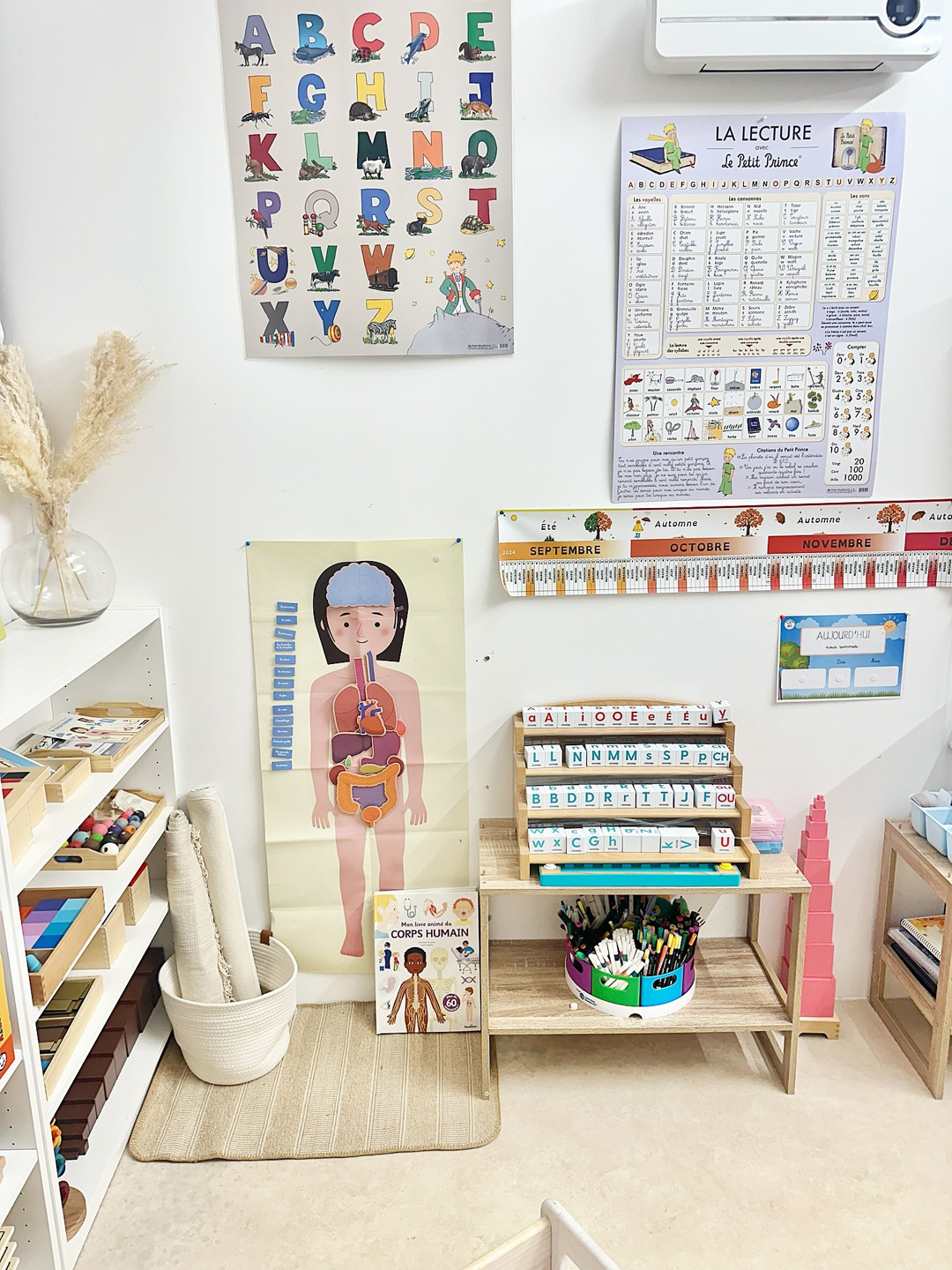
@luciie.nour
As your child’s interests evolve, you can update the materials to match their developmental stage. For toddlers, focus on sensory play and simple puzzles. For preschoolers, introduce early literacy and math activities. Involve your child in this process; asking for their input gives them a sense of ownership and pride in the space.
Creating a Montessori-inspired kids’ space at home is one of the best ways to support your child’s growth, independence, and confidence. By planning thoughtfully, selecting the right furniture, keeping the room organized, and encouraging practical life skills, you can design a space that nurtures curiosity and creativity.
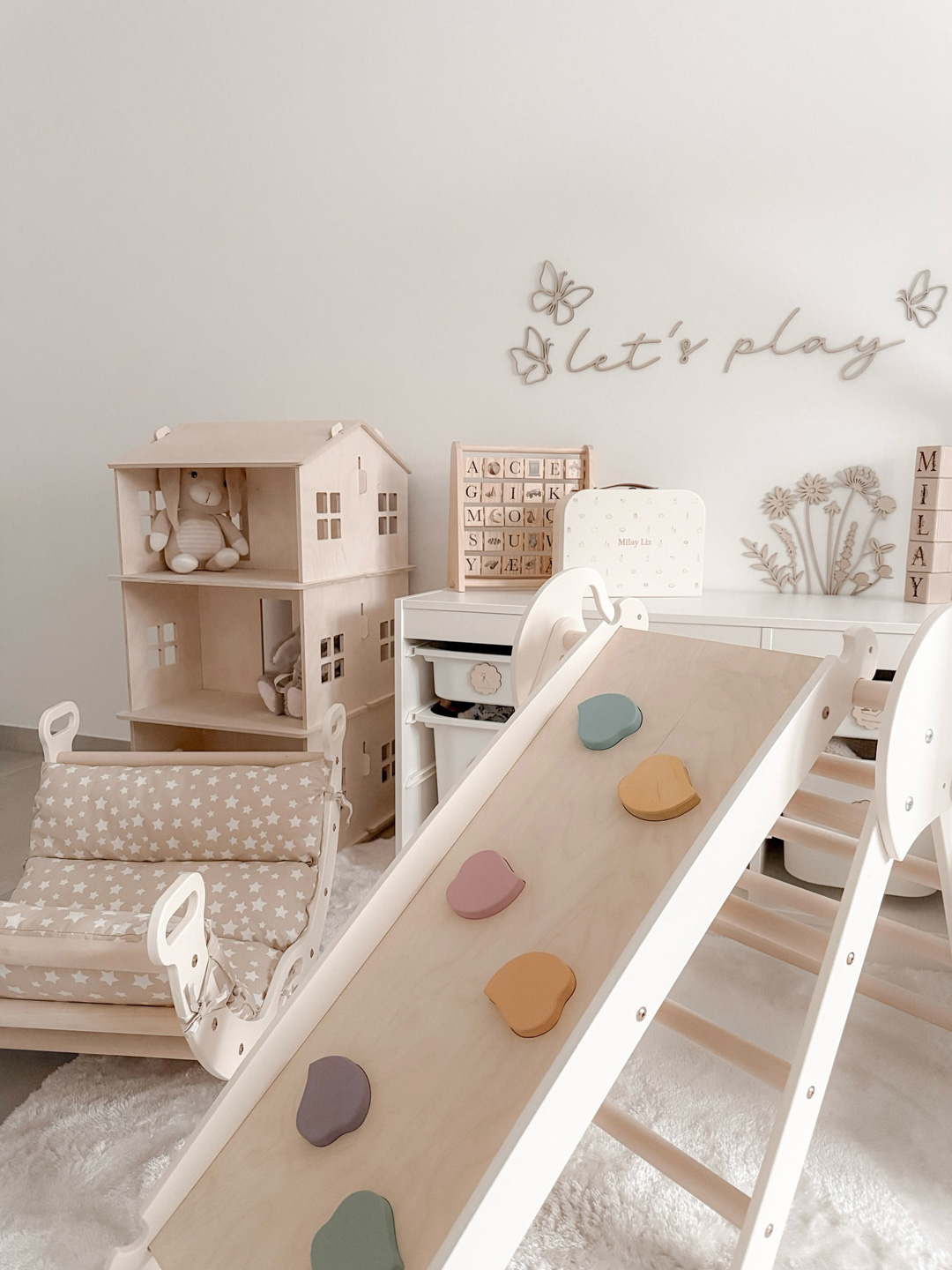
@bylizmi
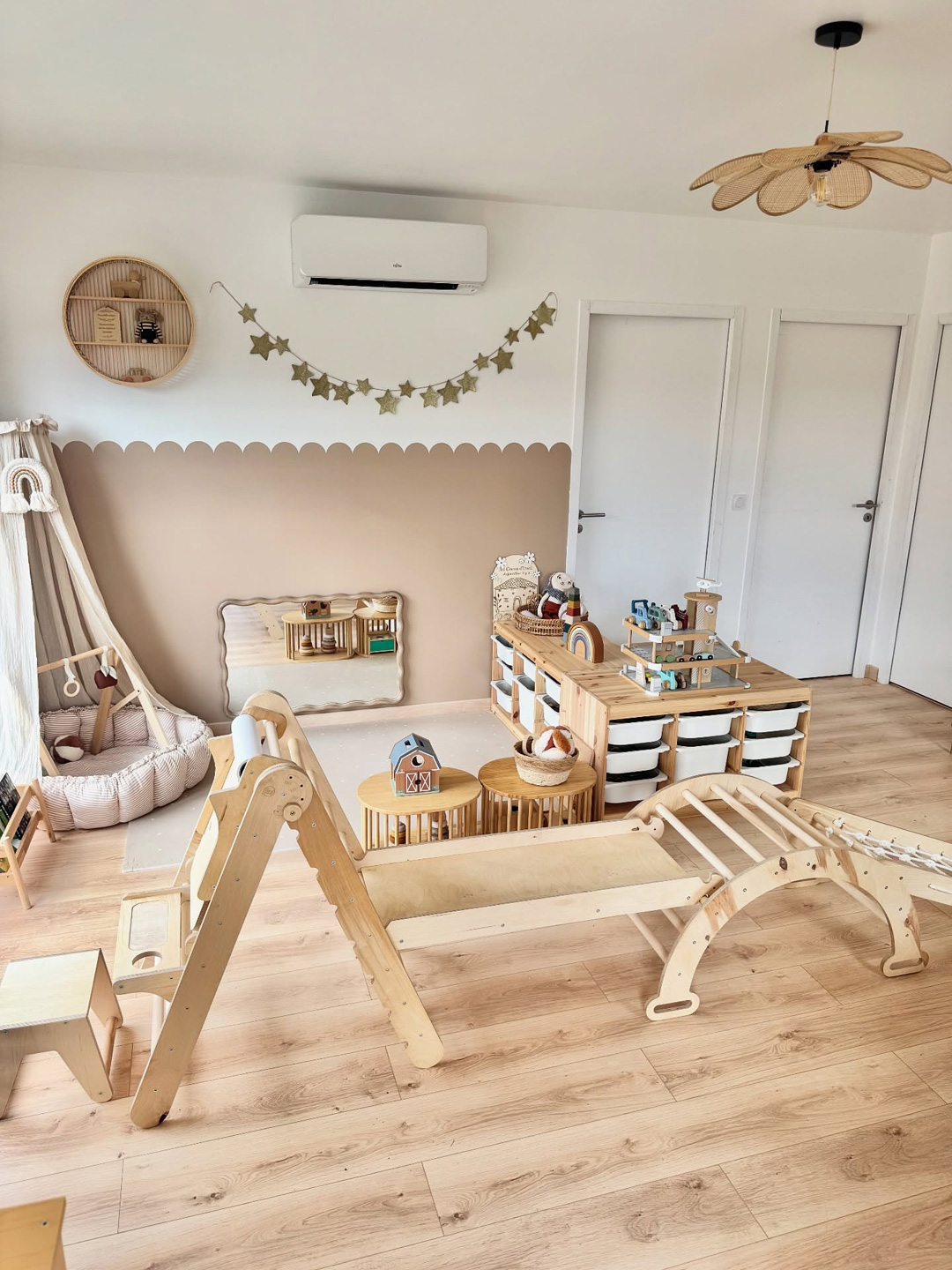
@nounoukat_
You don’t need to overhaul your entire house to see the benefits; even small changes can make a big impact on how your child learns and engages with their environment. The key is to start simple, stay consistent, and build a space that grows with your child. Watching them explore, learn, and thrive in a space designed just for them will make the effort well worth it.

